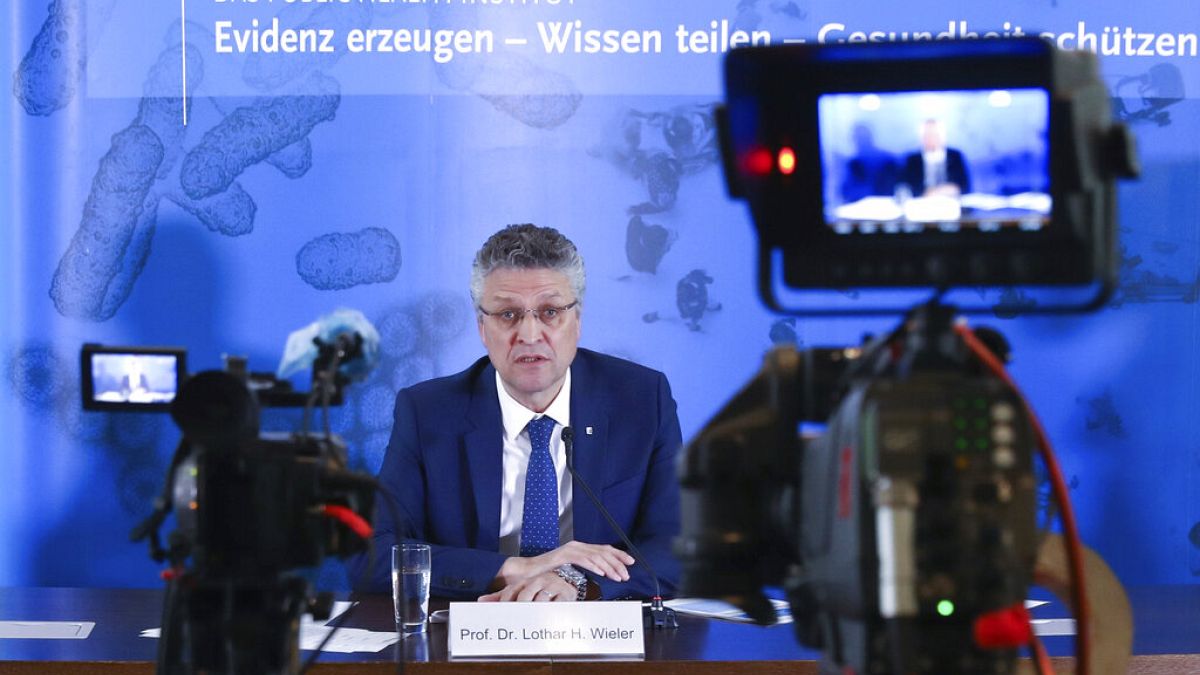All eyes are on Germany's R value. But what is it and why is it key in terms of when to lift lockdown?
Authorities in Germany are paying very close attention to the rate of the spread of COVID-19, using the reproduction number or R value as an important reference.
It indicates how many people one person with the virus can infect. If the rate is equal to 1, it means that one person is infecting another, on average.
What is Germany's reproduction number?
Germany has begun lifting its lockdown restrictions and health authorities are trying to keep the reproduction number below one to avoid a second wave of infections.
Its reproduction number had been 0.7 when confinement measures were eased on April 20. But it rose to 0.96 earlier this week, sparking alarm in Germany and beyond about the impact of relaxing controls.
However, on Thursday, the German government's disease control agency, the Robert Koch Institute, said the rate had fallen back to 0.76.
"This means that, according to these calculations, on average one SARS-CoV-2 infected person now infects less than another," said the institute's president, Lothar Wieler. "This is of course also a positive development. And as I said, let's keep it that way."
German Chancellor Angela Merkel has said keeping the reproduction number below one was paramount and small increases could make it difficult for Germany's healthcare to cope.
However, Wieler has previously stressed that this indicator was one of many and should be understood in a wider context.
"This means that R can only be considered, and this is very important to understand, together with other numbers," he said. "And the number of cases per day is exactly such a number. And you have also understood the reason correctly. The reason is that if we are below a certain number, then the health authorities succeed in tracking all chains of infection and then in ending outbreaks very quickly."
At the time of writing, COVID-19 has killed more than 6,000 people in Germany and infected in excess of 160,000.
How can the reproduction number be useful?
The World Health Organization has published studies on other infectious diseases in which it has suggested the reproduction number is a good way to estimate whether a virus can be eliminated.
"If the reproduction is less than one then the transmission is eventually stopped and elimination can be achieved," wrote the WHO's strategic advisory group of experts (SAGE) on the elimination of measles and rubella.
Research led by physicists and mathematicians at the University in Tarragona also suggests the R number can be a key parameter to track the progression of COVID-19 and that "the suppression of the epidemic is directly related to its value".
The study goes further and says the indicator could be a useful tool to design containment policies. Many countries use the number of daily cases as a measure to determine whether more containment or easing restrictions is required but the study says the R number could be more effective in making such decisions.
"Recently, we have observed how some countries, such as Spain or Italy, have failed in implementing the appropriate measures to stop the advance of the disease on time," the study says. "Our model suggests this is due to the fact that the mobility reduction imposed was insufficient to bend the curve of incidence of COVID-19."
According to these scientists, finding the right balance of containment measures and timing them right is key to successfully weathering the storm of this epidemic and others in the future. They say they have developed a mathematical model to determine when measures need to be implemented and how strict they need to be, based on the rate of infection, or R number.
Divisions over when to lift lockdown in Germany
Germany is one of the first countries to start easing restrictions after imposing a lockdown and other governments are following its progress closely.
The government's disease control agency stressed that Germans would have to learn to live with the virus and that certain measures would stay in place for several months to avoid a second wave of infections.
"We have to live for months in this so-called new normality, where we have to make sure that the virus has as little chance as possible of spreading further," said Wieler. "And that will continue to be the case, as things stand at the moment until we either have a vaccine that will give us the immunity we need."
Despite the drop in infections, he said testing should increase to treat more people and to trace infections.
Many governments across Europe are having to walk a difficult line between easing lockdown restrictions to allow their economy to restart and avoiding a second wave of infections.
This is creating a lot of tensions at a national level, including in Germany.
Throughout the crisis, the government has followed the assessments of health experts. But the cautious approach urged by scientists is proving increasingly unpopular as restrictions take their toll on the economy and people's livelihoods.
Chancellor Merkel is meeting regional representatives on Thursday to discuss how and if the country will continue easing restrictions.


